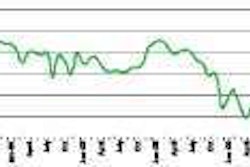Distracted driving gets out of hand

I recently received an e-mail that was making the rounds showing a series of images posted on Facebook by a truck driver who was snapping photos from the seat of his cab while driving down the road. Not surprisingly, the photo series ended with two pictures of his overturned trailer and totaled tractor. I did find it interesting that the company logo on the trailer represented one of the industry’s leading carriers frequently cited for its safety endeavors. While these images underscore the consequences of distracted driving, they also show that no matter how stringent a carrier’s safety program, such indiscretions still can and do occur on the road.
The Department of Transportation set its aim on such abuses coming out of the inaugural National Distracted Driving Summit last fall. At the second such summit held last month, U.S. Transportation Secretary Ray LaHood announced the Federal Motor Carrier Safety Administration’s publishing of a final rule to ban texting while driving for commercial vehicle drivers engaged in interstate commerce. The final rule takes effect Oct. 21, replacing a regulatory guidance issued by the agency last January.
If you take a close look at the data, the texting ban couldn’t come soon enough. According to the CTIA-The Wireless Association, the number of text messages by cell phone users has grown exponentially – from 32.6 billion in the first six months of 2005 to 740 billion in the first six months of 2009 – a 2,200 percent increase. As use of smartphones continues to grow, text usage is expected to increase further.
Although the ban explicitly targets texting, it demonstrates FMCSA’s resolve to tackle distracted driving as a whole. In the comments section of the final rule, the agency says it “chose to address the texting issue first because research indicates that it is a very dangerous activity,” based on an industry study released last fall by the Virginia Tech Transportation Institute under contract with FMCSA. According to the study’s findings, the odds of a safety-critical event while texting on a cell phone were more than 23 to 1 compared to CMV drivers who weren’t engaged in such distraction. Coming in a close third in the study was interaction with/looking at a dispatching device at 9.9 to 1.
The ban demonstrates FMCSA’s resolve to tackle distracted driving as a whole.
The American Trucking Associations and other industry groups indicated staunch support of the anti-texting regulation when the notice of proposed rulemaking was published last April, but some worried about the potential impact on in-cab fleet management systems and dispatch devices. At the time, FMCSA said the NPRM “shouldn’t be construed as a proposal to prohibit the use of such technology.”
During the comment period for the NPRM, fleet communication devices again came under fire by groups such as the American Association for Justice and the Commercial Vehicle Safety Alliance, who respectively said FMCSA should “prohibit CMV operators from using onboard computers while driving” and “prohibit not only dispatching devices, but many other technologies that cause distractions.” Meanwhile, ATA commented that the potential safety risks of using in-cab fleet management systems, global positioning and navigation systems and other such devices are not fully known.
In the final rule, FMCSA revised its blanket exception to texting to prohibit texting on a dispatch device or a device that is part of a fleet management system, stating that texting on a dispatching device is “indistinguishable from texting on another text-capable device.” However, the agency noted that “it does not prohibit use of the other functions of such devices for purposes other than texting,” as defined in the final rule.
While it’s easy to get behind the idea of banning text messaging, the potential of a farther-reaching rulemaking that extends to in-cab communications could have huge ramifications for the way carriers communicate with their drivers.
Jeff Crissey is Editor of Commercial Carrier Journal.
E-mail [email protected] or call (205) 248-1244.












